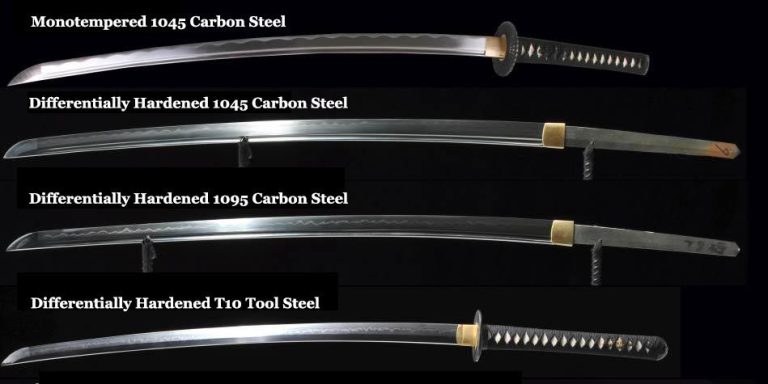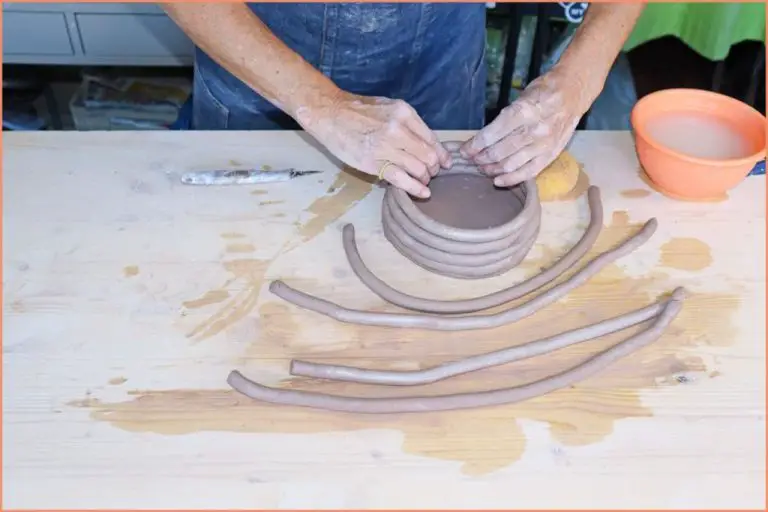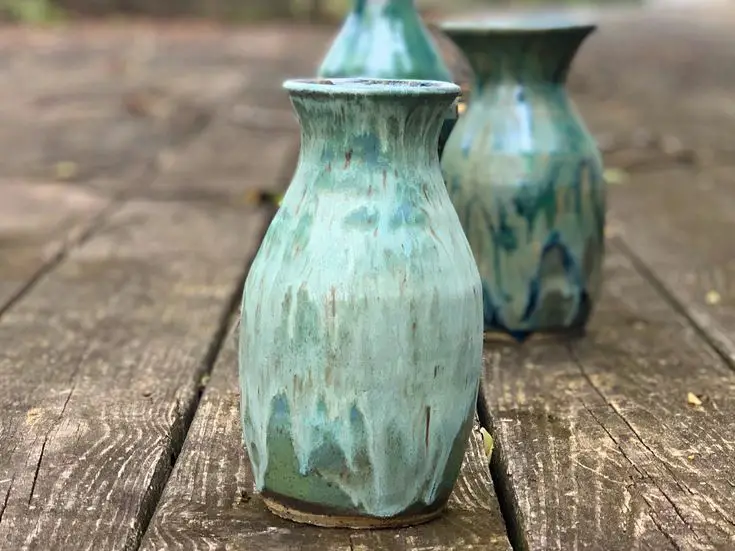What Is An Armature In Sculpting?
What is an Armature in Sculpture?
An armature in sculpture is a framework used to support a sculpture and give it shape and structure. The purpose of an armature is to provide support, especially for large or complex sculptures that cannot stand on their own. It serves as the inner skeleton for the artwork.
The armature provides a stable foundation to attach clay, plaster, paper mache or other sculpting materials to. Without an interior framework, many sculptures would collapse under their own weight. Armatures allow artists to create elaborate 3D forms that extend in multiple directions.
Armatures are made from rigid materials that can bear the weight of the sculpture material and hold its shape over time. Common materials used include wood, wire, rolled paper, cardboard, foam, plastic and metal rods or mesh. The armature often utilizes a combination of interconnecting shapes and structural elements tailored to the specific design of the artwork.
The framework may extend partially or throughout the entire sculpture. For example, an armature for a human figure may include wire shapes for the torso, head, arms and legs to support the outer clay material. The armature becomes a permanent interior part of the finished piece.
History of Armatures
The use of armatures dates back to ancient times. Some of the earliest known examples are from ancient Egypt, where armatures made of wood, metal, and other materials were used to support clay sculptures. According to the Metropolitan Museum of Art, a bronze dog statue from Egypt’s Late Period (747–332 BCE) contains an internal armature made of organic material that has since decayed (https://www.metmuseum.org/art/collection/search/544191).
In ancient Greece and Rome, armatures were also commonly used. Greek and Roman sculptors would create bronze sculptures by shaping wax over an armature, then encasing the whole thing in clay and firing it. The wax would melt out, leaving a hollow bronze casting. Traditional materials for armatures included wood, metal, and other rigid materials.
During the Renaissance, innovations in armature design emerged along with new materials. Italian sculptor Donatello pioneered the use of iron rods for armatures, allowing for more dynamic poses. In the Baroque period, more elaborate welded metal armatures were used to support complex marble sculptures with lots of undercutting and motion.
Modern sculptors have continued to innovate with new armature materials like plastics, epoxy resins, polystyrene foam, and advanced metal alloys. Contemporary armatures can be highly customized using 3D printing and digital fabrication techniques.
Overall, while early armatures were fairly simple, over time artists have developed more complex and integrally designed armatures to support ambitious sculptures in diverse materials.
Types of Armatures
Armatures can generally be divided into two main types – interior and exterior. Interior armatures are fully enclosed within the sculpture material, while exterior armatures remain partially visible and provide support from the outside. Rigid, unbendable armatures made of wood, metal or PVC piping lend more support but less flexibility for posing. Flexible armatures using wire, mesh or fabric allow for more movement and realistic poses. Some armatures are designed to be permanent parts of the finished sculpture, while temporary armatures are removed once the sculpture material has fully hardened. The type of armature an artist chooses depends on the material being sculpted, the size and pose of the piece, and whether the armature will remain as part of the final artwork.
Sources:
https://shop.sculpt.com/modeling-tools/armatures/
Materials for Armatures
Four common materials used for constructing armatures include wire, wood, plastic, and found objects.
Wire
Wire is one of the most popular armature materials due to its strength, flexibility, and ability to be shaped as needed. Different gauges of wire can be used, from thick armature wire to thinner wire like coat hanger wire or floral wire (Source 1). Copper and aluminum are commonly used as they are easily bendable. Steel wire provides rigidity and strength for larger sculptures.
Wood
Wood can provide stability and structure as an armature material. Thin strips of wood, dowels, branches, and other wooden objects are suitable. Wood needs to be dried and sealed properly to prevent cracking or warping. It offers more texture than wire (Source 2).
Plastic
Plastic items like straws, tubing, mesh, and bottles can be repurposed as armature materials. PVC and ABS pipes are also options. Plastic is easily cut and shaped to desired forms.
Found Objects
Everyday items like cans, bottles, cutlery, toy parts, or scrap metal can become part of an armature. Found objects introduce new shapes and dimensions to a sculpture. They should be solid and durable.
Creating an Armature
Building an armature is a crucial first step when creating a sculpture. The armature provides the underlying support and structure that the clay or other sculpting material will be built upon. When creating an armature, there are several key considerations:
First, think about the pose and proportions of the planned sculpture. The armature should match the basic proportions of the sculpture and allow you to achieve the desired pose. Consider making rough sketches to plan out the position of the limbs and torso.
Next, choose an appropriate armature material. Metal wire is commonly used, with aluminum being lightweight yet strong. Heavier gauge wire around 12-14 gauge can support more clay. Alternative options include wood, plastic pipes, rolled newspaper, or foam insulation [1]
Cut the armature material into appropriate lengths and bend into the basic shapes needed. Many sculptors start with the torso, head and main limbs, then add smaller branches for details. Wrap thin wire around larger pieces to attach them. Aim for stability in the armature, with wide stances and solid connections.
Use foil, tape or cloth to build up bulk and volume where needed. This will act as an inner core for the clay. Place more material in the torso, head, hips and shoulders. Smooth foils curves to match the form being sculpted.
Check proportions as you build the armature. Measure key body parts like heads, arms, hands and feet with a ruler. Add supports where limbs will extend outward from the body. Finally, test the strength of the finished armature before starting to sculpt.
[1] https://www.instructables.com/Make-an-Armature-for-Sculpting/
Armature for Different Sculptures
The type of armature required depends greatly on the kind of sculpture being created. Armatures serve different purposes for figurative, abstract, and large sculptures.
Figurative Sculpture
For figurative sculptures of humans or animals, the armature acts as the “skeleton” that provides structure and posture. It is carefully shaped to the proportions and form of the planned sculpture. The limbs and body are rendered in wire, allowing the sculpture to be freely posed. For example, Edgar Degas used flexible armatures in his famous bronze sculptures of dancers, enabling realistic poses like stretching and bending.
Abstract Sculpture
Abstract sculptures require simpler armatures, often just a basic frame for the outer materials to adhere to. The armature may only serve as an internal support rather than shaping the final form. Alexander Calder used delicate wire armatures for his abstract mobiles, letting colorful metal shapes hang freely from the frames.
Large Sculptures
Monumental sculptures need very robust armatures to support the weight of materials without collapsing. Large welded metal frameworks are constructed first to form the core structure. For example, Gutzon Borglum used massive steel infrastructure inside Mount Rushmore to support the huge expanse of carved granite faces.
Pros and Cons of Using an Armature
Armatures provide several key benefits for sculptors, but also come with some limitations to be aware of.
Some of the main advantages of using an armature include:
– Provides underlying support and structure for the sculpture (source). This allows sculptors to create pieces with extended limbs or thin protrusions that would be difficult to sculpt freely.
– Lightweight construction can make the sculpture more portable and easier to work on (source). Wire and other armature materials are much lighter than solid clay.
– Allows flexibility in the sculpting process. The armature provides a framework that can be adjusted as needed during sculpting.
– Can be designed to enable movable joints for articulated sculptures or stop motion animation.
However, armatures also come with some limitations:
– If not properly engineered, the armature may bend, warp, or break under the weight of the clay.
– Armatures limit the type of clay that can be used, as some may be too heavy or react poorly with the metal.
– Care must be taken when firing clay on an armature to prevent damage from heat exposure.
– Additional time and planning is required upfront to design and construct the armature before sculpting can begin.
Overall, armatures require more initial effort but provide essential structure and support for ambitious clay sculptures. Sculptors must weigh these tradeoffs for each new project.
Famous Examples
Some of the most iconic sculptures made use of armatures in their creation. Here are a few famous examples:
Auguste Rodin’s The Thinker (1880-1902) relies on an armature to support the contemplative pose of the figure. Rodin started by creating a small clay model, which he then enlarged by building an armature and placing clay around it to achieve the final monumental size of over 6 feet tall. The armature gave Rodin the framework to create a sculpture that appears deep in thought while also structurally sound.
Alberto Giacometti’s slender figurative bronzes like Man Pointing (1947) also make use of armatures. Giacometti built lightweight armatures out of plaster, wood, and wire to serve as the infrastructure for the thin elongated forms of his Existentialist-inspired sculptures. The armatures enabled his fragile figures to stand upright and take on bold gestures like pointing.
Alexander Calder’s hanging stabiles and standing mobiles depend on armatures to support their kinetic forms. Calder makes use of wire armatures to hold the abstract suspended shapes of his mobiles in equilibrium and balance. Meanwhile, his stabiles are anchored by solid armatures that allow forms like discs and arcs to project dynamically into space.
Troubleshooting Armatures
All sculptors will likely encounter issues with their armatures at some point. However, there are some common troubleshooting techniques to repair damage and reinforce weight-bearing areas:
To fix a broken or bent armature, sculptors may use pliers to gently bend the wire back into shape. Adding a sleeve of foil or tape around damaged areas can help reinforce weak spots. If wires have come loose from joints, they can be reattached with hot glue or epoxy. For major structural damage, it may be necessary to cut away the broken section and splice in a new piece of wire to rebuild the armature.
Extra care should be taken to reinforce areas that will support a lot of weight. Bulky areas like the torso and hips are prone to buckling or sagging under the weight of the clay. Adding crisscrossing wire inside these sections or using thicker gauge wire can help strengthen the armature. Strategically placed rubber bands, string, or thin rods can also provide extra support.
For more tips, refer to this tutorial on repairing wire armatures. With some minor repairs, most damaged armatures can be salvaged to support the sculpting process.
Innovations in Armatures
Armatures have come a long way from the simple wire structures used in the past. Sculptors today are experimenting with new materials and integrating technology to create more dynamic and functional armatures.
Some of the latest innovations include combining digital scanning and 3D printing to create custom-fitted armatures with great precision and detail. Sculptors can design an armature digitally, 3D print sections, and assemble them to perfectly fit their vision. This allows for more intricate and ambitious sculptures.
New composite materials like carbon fiber are also being used for lightweight yet very sturdy armatures. Carbon fiber rods and tubes allow sculptors to build large or heavily weighted sculptures with minimal armature bulk. Some artists are integrating moveable joints into armatures using modular connectors. This enables dynamic posed sculptures with limbs and appendages that can be adjusted during the sculpting process.
Overall, technology is removing many of the physical constraints previously imposed by traditional armature materials. Sculptors today have more freedom than ever to bring their imaginative ideas to life.






